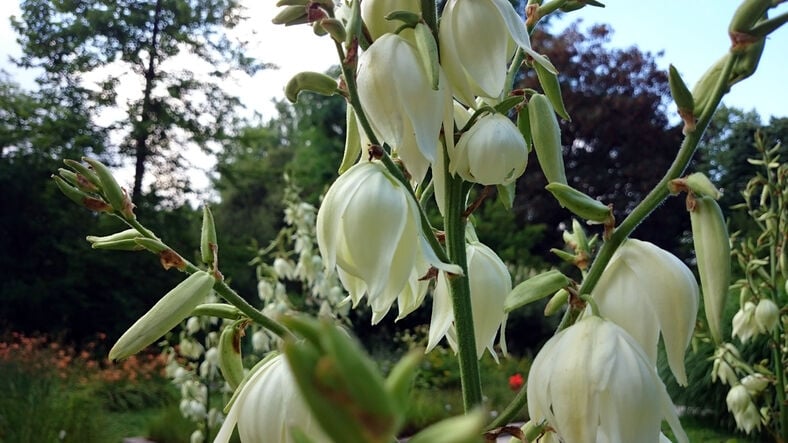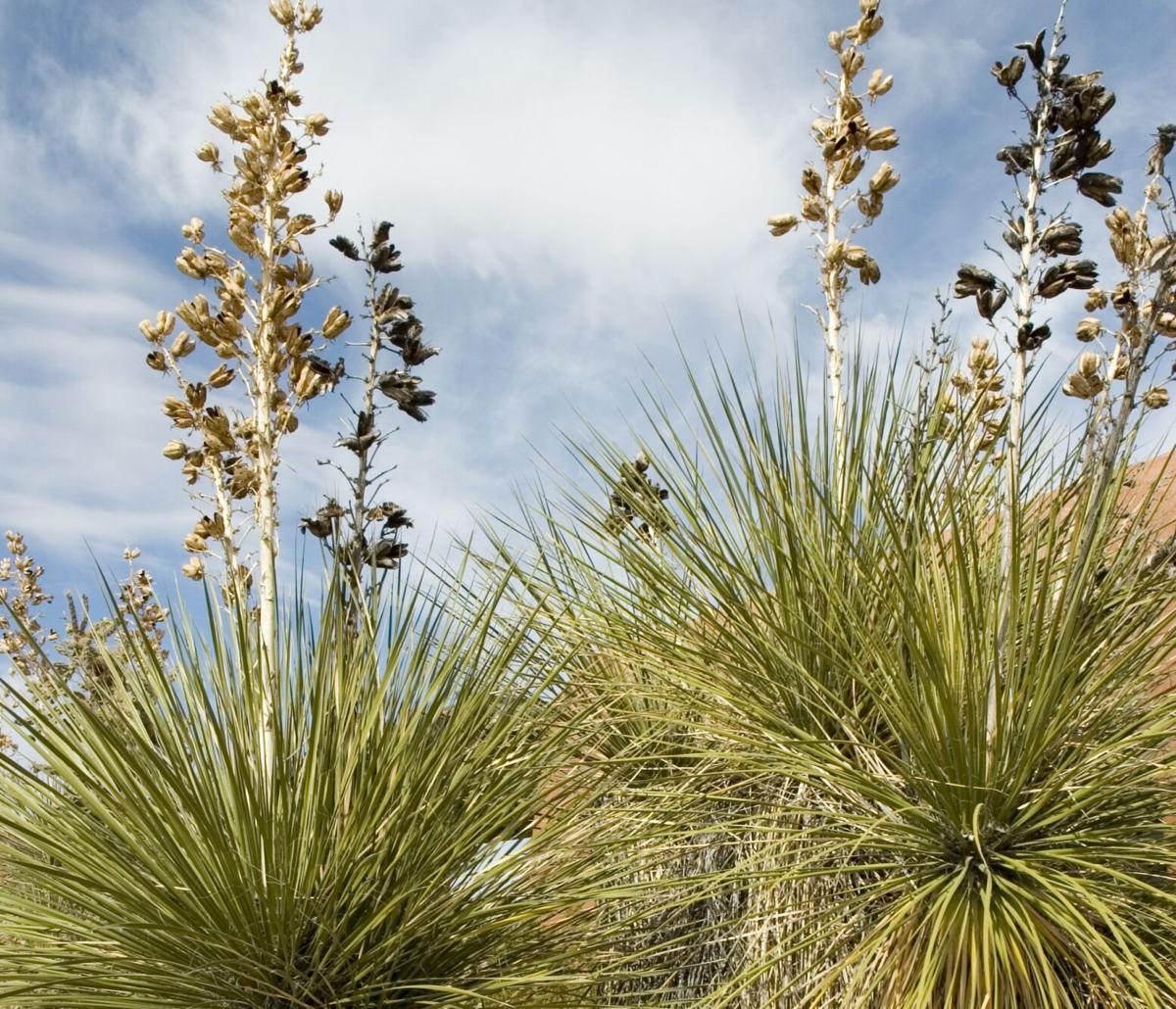The soaptree yucca, Yucca elata, is a slow-growing native plant that is well-worth waiting for. It is native to our region and the Chihuahuan desert, as well as northern Mexico. It’s very drought-tolerant, and once established will be self-sufficient without extra watering. It’s also very hardy, to 0 F, making it appropriate for a variety of microclimates in the Tucson area.
This plant is also architecturally striking. When mature, it can grow to 20 feet in height (some sources say 30 feet), and has a unique shape somewhat recalling the Joshua tree (to which it is related). Soaptree yucca can grow up to 10 feet in width so be sure to plant it in a spot with plenty of room. The trunk eventually looks shaggy with dried old leaf growth with a spectacular crown of new leaves cascading from the top. Plants can (and often do) have more than one trunk.

Soaptree yucca flowers in bloom. These flowers are pollinated by the yucca moths and are edible to humans.
The blooms appear in the late spring to early summer from a tall central stalk. The flowers are about 1 inch in size, creamy white, and fragrant. They are pollinated by the yucca moth, which lays eggs in the flowers. The petals and blossoms are reported to be edible (although I’d check for those moth larvae before popping one in your mouth).
The soaptree yucca grows best in full sun and well-draining soils. It requires virtually no maintenance, other than some pruning of dead leaves around the main trunk as it grows. Growth is reported to be only 1 inch per year in unirrigated plants, but can be accelerated with more regular watering. Many nurseries in town carry larger (and quite expensive) specimens for those not willing to wait.
As might be expected from its name, the plant is a source of saponins (in its trunk and roots) and these parts can be processed and used as soap. Native Americans of the region also made extensive use of its fibrous leaves as raw material for rope, textiles and sandals.






